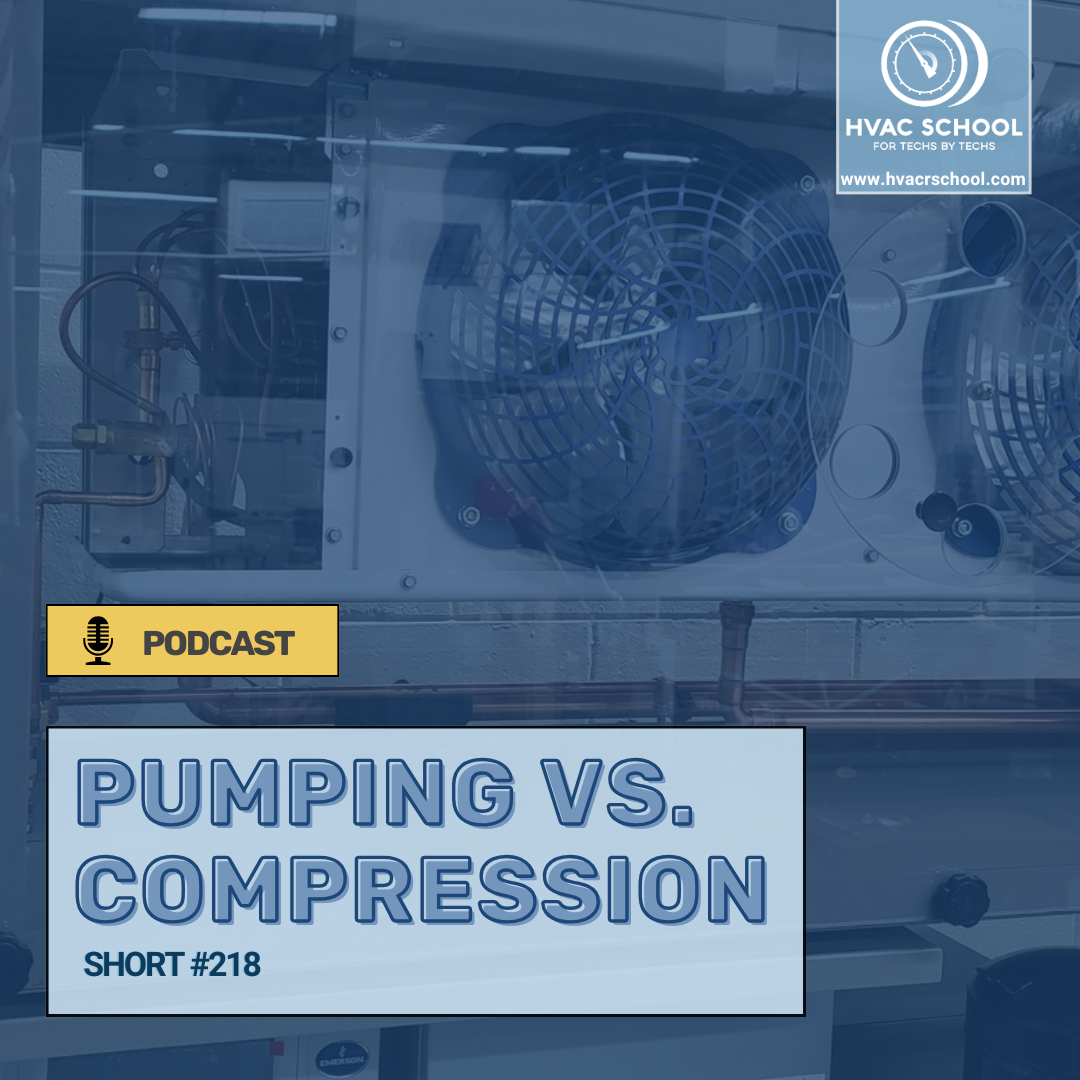Pumping vs. Compression – Short #218

In this short episode, Bryan clears up the confusion behind pumping vs. compression.
Pumping is usually associated with liquid. Liquid, like vapor, is a fluid, but it's a lot denser and is essentially incompressible because the molecules are close together. Liquid volume varies based on temperature and density, but we can't squish the molecules together. That's why compressors with very little axial and radial compliance fail when flooded; they can't compress the liquid. A circulator pump in a hydronic system is an example of a pump that pushes liquid along, but the pressure difference across the pump is minimal compared to that of a compressor; the same is true of liquid vs. vapor CO2.
However, vapor molecules are far apart and can be squished together to take up a smaller volume. That's why vapor can go through compressors, which take a fluid of one volume and apply pressure to shrink it to a smaller volume, raising the temperature in the process. Pneumatics, as opposed to hydraulics, utilize compression to move vapor around in a circuit. Recovery machines need to be able to compress vapor refrigerant and pump liquid into the recovery tank.
Compressors and pumps can either be positive displacement or non-positive displacement systems. A positive displacement system creates a trap and forces a fixed amount of fluid through a system, like a scroll compressor or a circulator pump. Refrigerant volumes may vary because vapor density varies with temperature and pressure (the volume flow is the same, but the mass flow varies). A condensing fan motor, on the other hand, is dynamic and varies the volume of air it moves in response to pressure, as the mechanism relies on velocity and kinetic energy to move air.
Have a question that you want us to answer on the podcast? Submit your questions at https://www.speakpipe.com/hvacschool.
Purchase your tickets or learn more about the 6th Annual HVACR Training Symposium at https://hvacrschool.com/symposium.
Subscribe to our podcast on your iPhone or Android.
Subscribe to our YouTube channel.
Check out our handy calculators here or on the HVAC School Mobile App for Apple and Android.
Author:









Comments
To leave a comment, you need to log in.
Log In